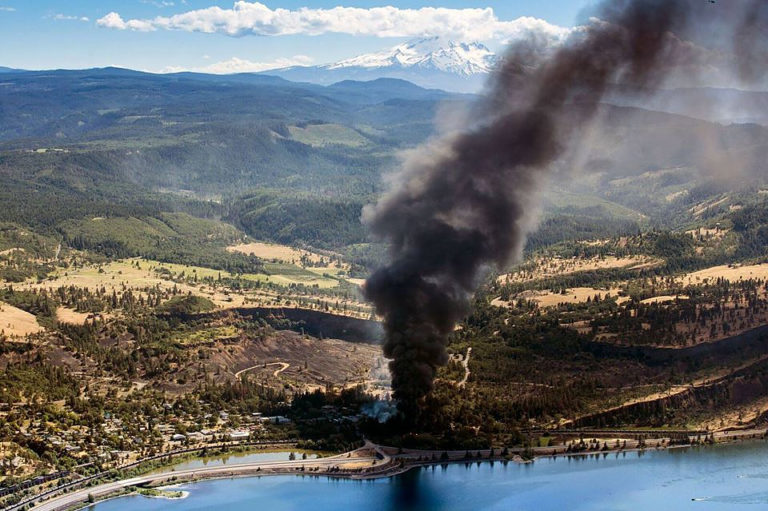
Yesterday, the Trump administration ordered specific prohibitions banning the U.S. Environmental Protection Agency (EPA) from issuing press releases, blog updates or posts to the agency’s social media accounts. President Trump’s order against EPA media will have serious consequences for American communities.
As a former firefighter and certified hazardous material first responder, as well as someone who has direct on-scene experience working many environmental spills over the last 20 years, the Trump-ordered media blackout of EPA is alarming and unnecessarily dangerous. Emergency preparedness directors (EPDs), fire chiefs, hazardous materials first responders, emergency medical first responders, physicians, the media and the public rely on factual information issued in EPA press releases in the wake of hazardous and toxic spills. They especially rely on EPA recommendations regarding the safety of public drinking water supplies impacted by spills or contamination, like this EPA press release issued last month.
The Trump-ordered media blackout is dangerous and irresponsible. It increases the risk of serious injury for first responders and communities; if serious disaster strikes while this EPA media blackout remains in effect, there could be unintended consequences that hurt real people. We have to hope that local EPDs, fire chiefs and state environmental officials can handle whatever may happen in American communities without any assistance from EPA while this dreadful order remains in effect.
Below is a list of recent EPA press releases to illustrate the types of information EPA is now prohibited from making public by President Trump’s order. Note that one them describes a $4M grant to two universities for drinking water quality research. This grant may be suspended by the EPA grant suspension order that Trump also issued yesterday.
January 17, 2017
- Updated List of Human Health Benchmarks for Pesticides in Drinking Water Available – EPA has updated its list of human health benchmarks for pesticides (HHBP) in drinking water. A total of 394 HHBPs are now available for pesticides that are currently registered for use on food crops or other use that could result in exposure through food or drinking water. EPA develops these benchmarks as screening levels for use by states and water systems in determining whether the detection of a pesticide in drinking water or a drinking water source may indicate a potential health risk. All benchmarks were calculated with updated exposure assumptions (related to body weight and drinking water intake). Three pesticides previously listed in the table (d-allethrin, S-bioallethrin, and bioallethrin) were removed due to updated exposure pattern information demonstrating that these pesticides are no longer used on food. The available information also indicates they do not have the potential to reach drinking water sources. Office of Chemical Safety and Pollution Prevention (OCSPP)
January 13, 2017
- For the First Time in 40 Years EPA to Put in Place a Process to Evaluate Chemicals that May Pose Risk – EPA is moving swiftly to propose how it will prioritize and evaluate chemicals, given that the final processes must be in place within the first year of the new law’s enactment, or before June 22, 2017. Office of Chemical Safety and Pollution Prevention (OCSPP)
January 12, 2017
- EPA Provides Two Universities with $4 Million for Drinking Water Quality Research – EPA has announced approximately $4 million in funding to two universities to research water quality issues related to low flow conditions of drinking water in premise plumbing systems. (Office of Water (OW)).
January 6, 2017
- EPA Releases Final Analysis of Metals Released from Gold King Mine in the Animas and San Juan Rivers – EPA’s Office of Research and Development has finalized the report “Analysis of the Transport and Fate of Metal Released from the Gold King Mine in the Animas and San Juan Rivers.” The report is a scientific analysis that focuses on understanding the river conditions before the GKM release; the movement of the GKM release through the river system; and what has happened to water quality in the river since the time of the GKM release. The research supports EPA’s earlier statements that water quality in the affected river system returned to the levels that existed prior to the GKM release and contamination of metals from the release have been moved through the river system to Lake Powell. (Office of Research and Development (ORD)).
December 15, 2016
- EPA Takes Action to Prevent Poisonings from Herbicide – EPA is finalizing safety measures to stop poisonings caused by ingestion of the herbicide paraquat, which can also cause severe injuries or death from skin or eye exposure. Office of Chemical Safety and Pollution Prevention (OCSPP)
December 13, 2016
- EPA Releases Final Report on Impacts from Hydraulic Fracturing Activities on Drinking Water Resources – EPA is releasing its scientific report on the impacts from hydraulic fracturing activities on drinking water resources, which provides states and others the scientific foundation to better protect drinking water resources in areas where hydraulic fracturing is occurring or being considered. The report, done at the request of Congress, provides scientific evidence that hydraulic fracturing activities can impact drinking water resources in the United States under some circumstances. As part of the report, EPA identified conditions under which impacts from hydraulic fracturing activities can be more frequent or severe. The report also identifies uncertainties and data gaps. These uncertainties and data gaps limited EPA’s ability to fully assess impacts to drinking water resources both locally and nationally. These final conclusions are based upon review of over 1,200 cited scientific sources; feedback from an independent peer review conducted by EPA’s Science Advisory Board; input from engaged stakeholders; and new research conducted as part of the study. (Office of Water (OW)).